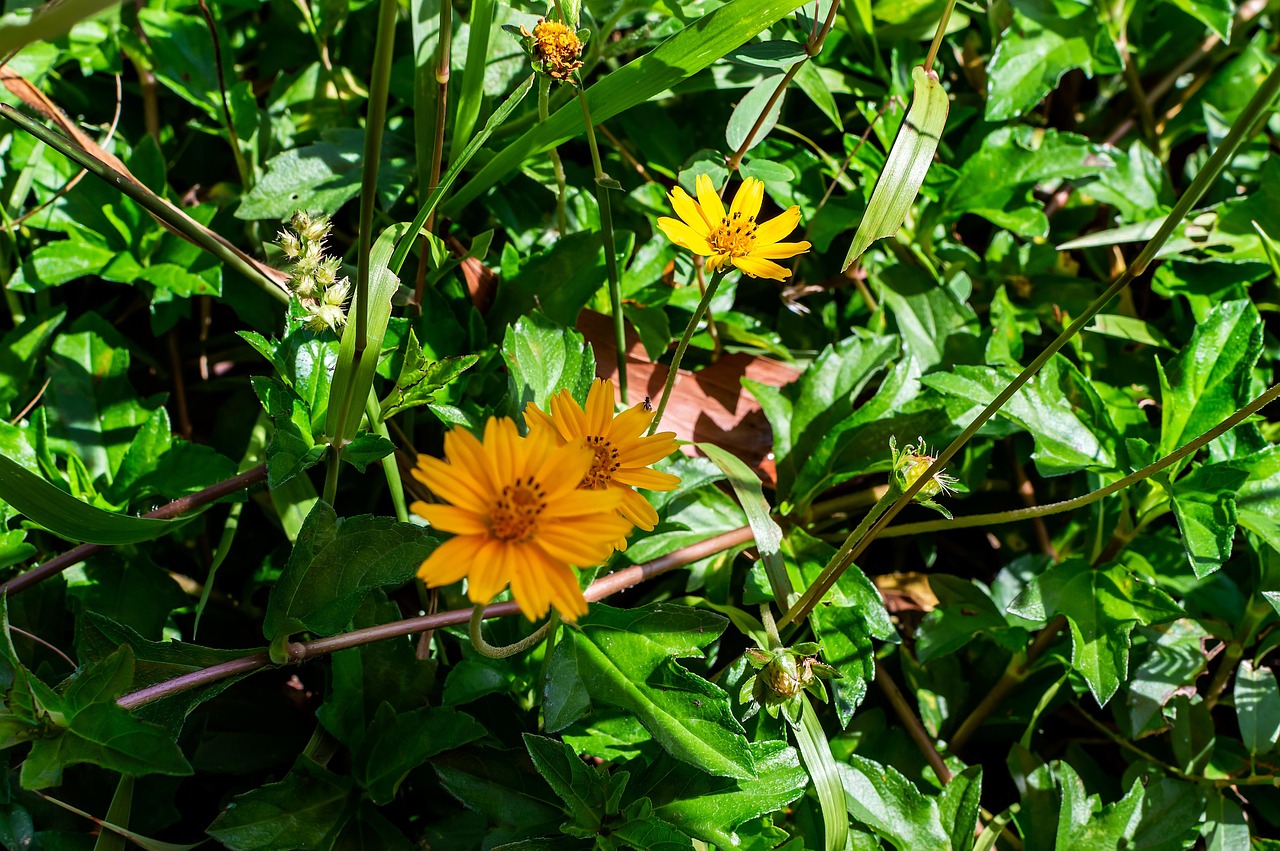
Singapore Daisy
Sphagneticola trilobata
Basic Information
🌿 Family: Asteraceae🗺️ Zone: 9-11
Other Names:
- Bay Biscayne Creeping-Oxeye
- Creeping Daisy
- Creeping Oxeye
- Creeping Wedelia
- Rabbit's Paw
- Trailing Daisy
- Yellow Dots
🌡️ Ideal Temperature : 65°F – 85°F
🔥 Heat Tolerance: Up to 100°F
❄️ Cold Tolerance: Down to 32°F
🌱 Type: Perennial
Layers
- Ground
Functions
- Ground Cover
- Erosion Control
- Pollinator
Pests
No pests associated with this plant.
Companions
- None (due to its invasive nature, it is not recommended to plant Singapore Daisy near other species)
Plants to Avoid
- Native Plants (to prevent competition and displacement)
Description
Singapore Daisy is a vigorous, mat-forming perennial herb that typically grows up to 70 cm (27.5 inches) tall when flowering. It features glossy dark green leaves, usually with three pointed lobes and toothed edges, arranged in opposite pairs along green or reddish hairy stems that can reach up to 2 meters (6.5 feet) in length. The plant produces bright yellow to orange-yellow daisy-like flowers, approximately 2-3 cm (0.8-1.2 inches) in diameter, throughout the year, with a peak flowering period from spring to autumn. While it is often used as an ornamental ground cover due to its dense foliage and attractive flowers, Singapore Daisy is considered invasive in many regions, as it can outcompete native vegetation and disrupt local ecosystems. :contentReference[oaicite:0]{index=0}
🌞💧 **Sun and Water Requirements:**
Singapore Daisy thrives in full sun to moderate shade, flowering more abundantly in sunny positions. It is highly adaptable to various soil types, preferring moist, well-drained soils but also tolerating dry conditions, temporary inundation, and drought. The plant is notably salt-resistant, making it suitable for coastal areas. :contentReference[oaicite:1]{index=1}
✂️🫘 **Methods to Propagate:**
Propagation is primarily vegetative, as seeds are usually not fertile. The plant readily roots at stem nodes, and new plants can grow from small stem fragments. Tip cuttings are very easy to root and are commonly used for propagation. :contentReference[oaicite:2]{index=2}
🧑🌾👩🌾 **When to Harvest:**
As an ornamental ground cover, Singapore Daisy does not have specific harvest times. However, regular pruning or mowing may be necessary to manage its growth and prevent it from invading unintended areas. Care should be taken to properly dispose of plant material to prevent unintentional spread. :contentReference[oaicite:3]{index=3}
Purpose
- **Ground Cover:** Singapore Daisy forms a dense mat, effectively covering the ground and suppressing weed growth.
- **Erosion Control:** Its extensive root system helps stabilize soil, making it useful for controlling erosion on slopes and embankments.
- **Pollinator:** The bright yellow flowers attract pollinators such as bees and butterflies, supporting local pollinator populations.